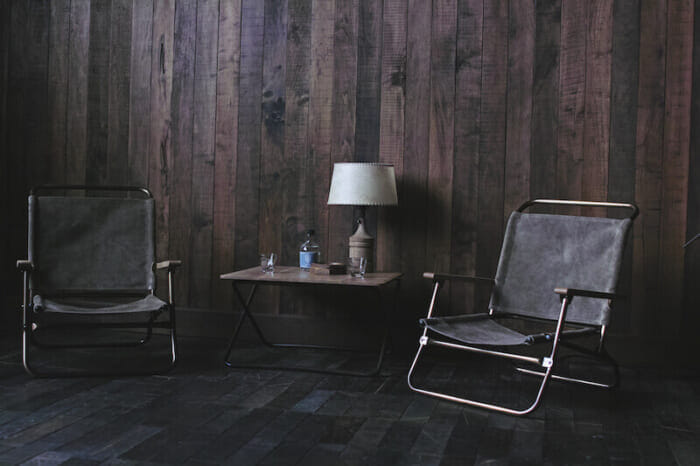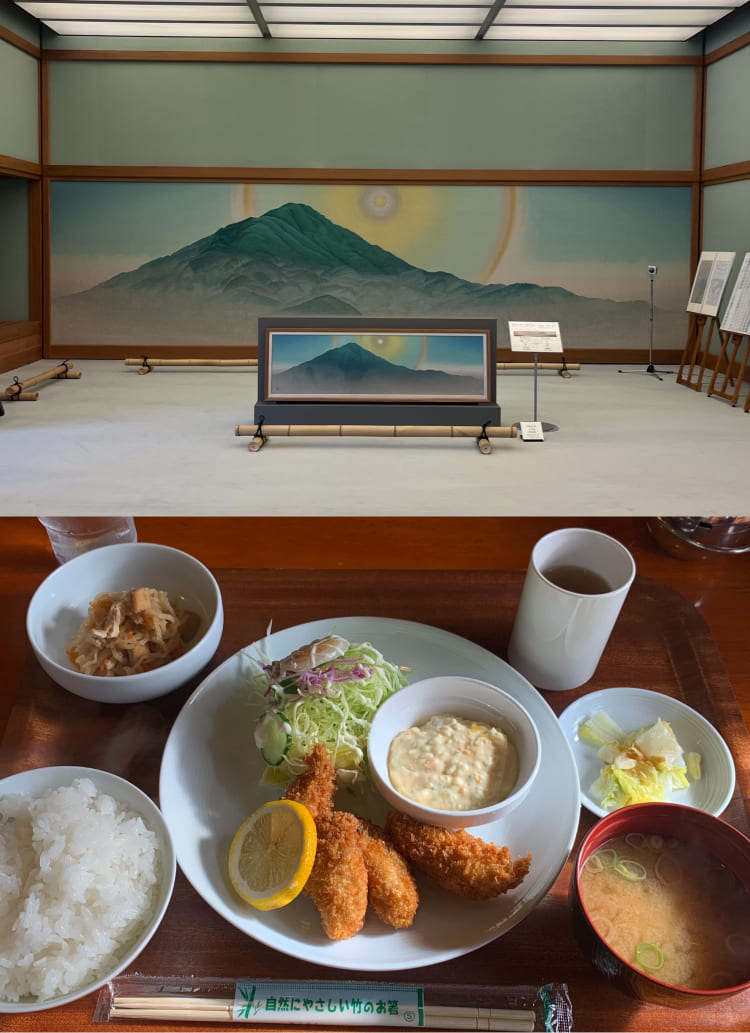PROFILE

Born in 1976. Worked in sales and planning at the select store "NEPENTHES. After leaving the company, he became a designer for "hobo" in 2005. He designs a variety of products each season, including bags, accessories, and footwear.
https://thathobo.com/
PROFILE

Born in Osaka in 1968. After graduating from high school, he studied furniture making at the woodworking department of Matsumoto Technical College in Nagano Prefecture. In 1997, he established "TRUCK" with Hiromi Karatsu, and in 2009, they moved to their current location in Asahi-ku, Osaka. In 2009, they moved to their current location in Asahi-ku, Osaka, where they continue to produce one-of-a-kind furniture with a thorough attention to detail and quality.
https://www.truck-furniture.co.jp/
Have the two of you ever had a solid conversation like this before?
Asakura: I've only sent out a few messages with my own company's stuff, and this may be the first time for me to do so with the media.
The reason for the collaboration, or rather, how the two of you came to be connected, is that you were originally a fan of "hobo" items, right?
Kise: That's right. I was allowed to buy a backpack at first, and I used it to the hilt. I used it when I went abroad for sure. But then it was discontinued once, wasn't it?
Asakura: That's right.
Kise: We had it reprinted and sold it in our store.
Asakura: I am grateful for the opportunity. For my part, I never thought I would be able to work with a furniture maker in a totally different genre.

On the left is the model first manufactured by ARAI TENT, which Mr. Kise purchased. On the right is a prototype sample for a special order with TRUCK. Both of them have been used a great deal, and the distance and years they have traveled together are deeply engraved on them.
Asakura:Anyway, I was so excited.
Did you own anything from "TRUCK" at that time?
Asakura:I had a small ottoman that someone gave me for a child. Then there were cushions and so on. So at first they stocked it, and then they agreed to do a special order for me.
Kise:Oh, I see.
Asakura:With that series, we had a separate order for a few different shapes and colors, and from there it went into the furniture.
By the way, where did you buy your "hobo" backpack?
Asakura:Probably "vendor".
Kise:Yes, I am. I first started going to "vendor" because (chef) Kentaro was into it. Eventually, he started going to exhibitions. Once he got into it, he would go there a lot.
What part of the story struck you?
Kise:I wonder what it is. Anyway, I am very happy with it. It doesn't look that big, but it holds a surprisingly large amount of stuff. And the pockets. It is common to have various pockets on bags and clothes, but you don't use them that much. On the other hand, I am happy to have too many pockets, but I don't know what I put in where.
Yes, there is.
Kise:But that backpack uses all the pockets evenly. When I go abroad, I always use that one for my carry-on. Yeah, it's in good shape.

The relationship between function and design is a difficult one. As you say, multifunctionality is not always enough.
Kise:I've bought a lot of backpacks when I found one that caught my attention, but the only one that has taken root and I use it all the time is this one. The others will eventually pile up and get put away. It's excellent, I love it.
Asakura:Actually, I'm making it again.
Kise:Oh, really?
Asakura:Yes, I did. But the factory there is no longer available, so I wanted to do it somewhere else. Of course, we had to update it a bit.
Kise:By the way, where are you updating?
Asakura:I'm thinking of keeping the exterior basically the same, but adding a shoulder harness, back padding, and a small pocket inside.
Kise:If I could make one request, it would be that the top zipper needs to be properly oriented so that it can be shuffled open.
Asakura:Ah, yes, it is a difficult place to do it because of the cubbies.
Kise:But really, that's about it. Also, I put a 500 ml plastic bottle in the pocket on the side of the backpack, even though I don't think they made it that way. I don't like it if you can see the color of the tip of the bottle, but that one is just fine without being visible.
That kind of detail is important, isn't it?
Kise:Yes, it's important.

Asakura:I was interested in the items that Kise-san made, so I decided to buy a rover chair, or "TRUCK," as it is called at TRUCK.TSP FOLDING LOW CHAIRWe talked about the idea of changing the material.
When you first started, were you nervous?
Asakura:Well, that's how I always feel (laughs).
That's right. I think it's probably not an easy task to create something with TRUCK.
Kise:If it is not something I would use, I would not want to have it. If that were the case, there would be no point in doing it, or I would not be able to do it. So I always feel sorry for them and sometimes turn them down, but if they are bold enough to ask again and again, it makes me think that if they say so much, it must mean that they have feelings for me.
That is true.
Kise:And when I actually make them, I use them a heck of a lot myself, and I'm happy with the results. But I don't want to do everything and add items that I am not interested in. So I think I'm probably a picky person.
Asakura:But that is your base, isn't it? So I don't think it's easy to break down that base. However, I have to share my thoughts and feelings with him to make him understand, so I talk with him about various topics every time.
The first "TSP FOLDING LOW CHAIR" collaboration model was proposed by "hobo" as a fabric, wasn't it?
Asakura:Yes, I did. At the time, there was a water-proof, long-fur leather that I often used inline.
Kise:That is the best. I use that chair myself all the time.
Asakura:In fact, it repels water to a certain extent and is easy to use, but I thought it would go well with TRUCK furniture, including its long fur.
I understand. The atmosphere is harmonious, isn't it? This is the first time for us to use canvas.
Asakura:The reason we haven't done this before is because TRUCK's inline is canvas. However, TRUCK's fabrics are slightly processed, which makes them a bit unique. We don't use fabrics that are already available.

FOLDING CHAIR COTTON CANVAS COFFEE DYED ¥71,500 W55×D60×H64×SH21cm
The TSP Low Chair is eye-catching with its military-derived design and low seating position.
This time, coffee beans were reused and dyed.
Asakura:Since hobo has been doing dyeing recently, we wanted to make a difference, so that's why we made this suggestion. As for why coffee, Mr. Kise said, "Coffee is a good drink.BirdWe are also a separate company.SIDEWALK COFFEEI was wondering if I could make good use of the runoff from the work I was doing.
Have you ever made anything with dyed fabrics at TRUCK in the past?
Kise:I don't know. I think I have dyed some simple things, like souvenir tote bags, but I don't think I have done any mud-dyeing or anything like that. I did once sell a bag dyed with persimmon astringent at a store, though. I liked those bags so much that I wanted to make sofas with that kind of material, but I have never tried to incorporate it into furniture.

The coffee dyeing this time is very atmospheric.
Kise:I feel like it's somehow a little better than when I first saw it.
Asakura:Is it a sense of processing?
Kise:Mm-hmm.
Asakura:I'm consciously making the processing a bit stronger. So I'm not sure if I can get this to come out consistently.
Kise:If you make the numbers, that's what happens to Moto-chan.
Asakura:That's right. So there is a sense of tension.
Kise:But that's the way it is, isn't it, dyeing?
As the name suggests, the TSP FOLDING LOW CHAIR is characterized by its low seat surface.

Kise:Yes, we did. I started out making tall ones. Originally, I had an old English "Rover chair" in my garden that I had been using for a long time. When I looked at the back of the chair, I found various letters written on it, and when I started to unravel them, I found out that they were still being made in Coventry, so I contacted them. I contacted them, but I didn't find the new ones they were selling now interesting. They looked like something you would find at a home improvement store.
I see.
Kise:So, rather than buying and selling new products, I asked him if he could make them with a different color of pipe and canvas, and he said yes. So I went to England twice, spent about a week at the factory, then sewed the canvas in Okayama and added post-processing, and after a great deal of time and effort, I made and sold a regular tall chair.
Asakura:I see.
Kise:Next, we decided to make chairs for bonfires, so we had a modified version made in England at first.
Asakura:The short one, right?
Kise:Yes, I could have imitated them, but I didn't want to do that. After all, I could have had them made by imitating them, but I didn't want to do that, and I wanted them to be made by a real place anyway.

So you felt compelled to raise the price.
Kise:So I decided to stop making them in the U.K. and started talking with a company over there about making them in Japan. Then, I was talking with a company over there about making them in Japan, and they came up with another company that started making them at a very low price, and even though they were originally only available in green, they started making brown ones as well. I don't know how that came about, but when I saw that, I decided to stop selling the taller ones. I didn't want to compete with the cheap ones.
So that's how it happened.
Kise:I'm still making the shorter, campfire ones, because I started them and I thought it was okay. But nowadays, there are a lot of low ones out there.
Asakura:Yes, there is.

I think bonfires are an important keyword for this project.
Kise:I've been doing it since elementary school.
I'm not half as old as I used to be.
Kise:When I was a child, I lived in a complicated residential area, but there was a long-standing plan to build a large road near my house, and all the houses were evicted due to the construction. That huge vacant lot was a great playground, and from elementary school I played there by making fires with all sorts of things on my own.
It's hard to find such a place nowadays.
Kise:That is where I became familiar with fire. I would burn pebbles and wrap them in a cloth, and give them to ladies passing by, saying, "Here is a warmer" (laughs). (Laughs.) Then, when I was in the first year of junior high school, I bought a camping burner. I really wanted to buy a gasoline burner, but the guy at the store said, "It's not safe, so I'll use this one.
But, I guess it's a little early to be a burner in the first year of middle school.

Kise:I was also into BMX at the time, so I would carry my bike up and down the nearby mountains. I would make a fire, boil water, drink instant coffee, and eat cookies. I loved that kind of feeling. It wasn't like today, when the outdoors was all the rage. At the time, there was a cool adult magazine called "Beepal" and "Outdoor," and I was always looking at them. So I always had an affinity for bonfires, or fire.
Asakura:It's hard to find someone like that, isn't it?
Kise:When I moved here, I used to burn wood chips from the factory in the yard using a Snow Peak fire pit, which not many people had at the time.
If you were a furniture maker, you would have a lot of wood chips, wouldn't you?
Kise:At the time, I was into scotch for some reason, and I thought the smokiness of scotch and the smokiness of a bonfire went really well together, so I called it a "bonfire bar.
How about bonfires, Mr. Asakura?
Asakura:I also like to play outside, so when I go camping with friends, we usually have a bonfire. Also, I live in the countryside in Toyama, so I could make campfires anywhere in the countryside. When I was little, I used to help out and burn things like this.
I see.
Asakura:Since I came to Tokyo, such an environment is hard to come by, so I don't get to do it that often.
Bonfires are all the rage now, aren't they?
Kise:Yes, I think it's a good idea. But I think if we all did it, we would love it.
Do you ever go on camping trips and come up with ideas of what you would like to have, and do you end up planning and developing products?
Asakura:I don't mean for the camp, but I think there is some manufacturing that will lead to that as well.

Asakura:The chairs that Mr. Kise and I make are just a piece of gear that we can take with us to such places, but I don't have any other ideas about making things related to camping.
Is that a dare?
Asakura:I don't know if it was a dare or not, but I felt that was not my place to enter the market. I am a little more town-oriented, and I make things that people in the town can enjoy.
I see. So, I have a question for you, Mr. Kise. Since you have been familiar with bonfires for so many years, have you ever thought about building your own fire pit?
Kise:Once, I almost did it because I was a little bit confused, but while I was saying that, there were a lot of things coming out from various brands.
Yes, there are many kinds now.
Kise:Then I immediately think, "If I do that, I'm done.
I really want a TRUCK fire pit, though.
Kise:Camping is very popular now, but in the old days, camping, or rather, camping in the field, is what I used to do. I would go touring with a tent and a sleeping bag strapped to my motorcycle, and in the evening I would go into the mountains, find a suitable place, and camp out in the open. I don't know if that is good or bad. That's why I never thought of going to a campground. I don't like the way the parking lots are barred at campgrounds. I don't really like that.
I see.
Kise:When something gets exciting somewhere, I don't want to be too close to it. That's why I don't want to go to campgrounds, and there were various things I wanted to make, but I thought, "Oh well. This time, Mr. Asakura talked to me about it, and I made various things, but basically, I don't want to make something that will be followed by others.
Asakura:By the way, I make a lot of proposals every time. I always have a lot of suggestions. But of course, there is no way I can do everything. Still, I make various proposals every time.
Kise:Yes, so I'm amazed that they didn't get down and say that (laughs).

TOTE BAG COTTON CANVAS COFFEE DYED ¥35,200 W42×D18×H42cm 41L
This tote bag uses thick stitching and has a moderate girth and strength. Coffee dyed by reusing beans after extraction from "SIDEWALK COFFEE" and "Bird".


TRUCK and hobo have been working together for quite some time now, haven't they? Isn't it unusual for TRUCK to collaborate with one brand for such a long time?
Kise:I think it is really valuable. I get a lot of offers from other camping equipment-related companies, but I don't take a cheap deal, and I turn them down. I would do it if it meant something to me, but I'm doing it with "hobo" in this way to begin with.
I wonder why there are so many collaborations going on.
Kise:This time, at Mr. Asakura's request, we added cushions to the chairs for the first time. We made a prototype and went back and forth several times to find improvements, and once we were satisfied with the result, we decided to go ahead with it. When the finished product arrived at my home, I sat down and found that the pillow didn't feel right when I leaned my head against it. When I touched the back of the cushion, I felt the corners of the urethane. I thought, "This is not right.

Yes.
Kise:I immediately talked with Mr. Asakura, and he said, "That's the one I had you check before. But if the one I checked was really the same one, it was so different that I wondered how much I was meditating on it. Then, a few minutes later, one of our staff members said, "I'm sorry, the one we gave the OK to was a different one. I was mistaken. When I touched that one, I found it was different. It was softer and rounder. But I think Mr. Asakura must have thought, "I gave the OK once. But as a furniture maker, I didn't want to release it in a state where I thought it was no good.
Ah.
Kise:However, I think Asakura-san had a plan for when he would release the product.
I think the company's circumstances naturally intervene.
Kise:Yes. So I asked them to send me another sample from Tokyo to compare. The material inside was the same, but the way the fabric was tightened during the coffee-dyeing process differed depending on the quantity produced. So, what happened in the end was that we stopped the production and Mr. Asakura opened the inside and took out the corners one by one with a cutter.
Asakura:I went to the factory in Fukui (laughs).
Kise: If something like that happens at [TRUCK], we have to rewind and start over. I only want to sell what I am satisfied with. But other people are not used to this kind of thing, so they might say, "We don't have much time, so please just do it again this time," but I was very happy that they understood that and said they would do it again.
I see.
Kise:When you do that, it deepens my sense of trust in you. If you were to push me to do that, I would immediately say, "Well, let's stop then.
I now understand why the relationship continues.
Asakura:This is a common occurrence in the manufacturing process. However, I naturally want to release my work in a form that I am satisfied with.

So, Mr. Asakura's request was finally approved this time, is that right?
Asakura:Yes, they do. There are many times when they refuse, but there are also times when they make it happen, like this time. I have been requesting this cushion for quite some time. Up until now, when I got sleepy after drinking alcohol and wanted to go to bed, the pipe would hit me on the head with a bang. Also, having a cushion on my lower back makes all the difference.

Kise:Well, you know what I mean. Also, I was asked a lot about this size table. At first I didn't want to make it (laughs). Originally, it was smaller, and I just wanted to put a glass on the side for drinking scotch when having a bonfire. Then they asked me to raise the height and increase the size.
So you made a pass at him.
Asakura:I hit on him every time (laughs).

WOOD FOLDING LOW TABLE ¥63,800 W52×D59.5×H33cm
A spacious folding low table with a solid oak top that daringly leaves knots, splits, and rough wood parts as they are.

Kise:At first I said, "No" (laughs). (Laughs.) Rather than making camping tools, I was making them for the purpose of making campfires. There are so many camping tools in the world.
Indeed.
Kise:But when I made them while saying, "No," I ended up using them myself a lot (laughs).
Asakura:LOL!
So it was convenient (laughs).
Kise:The other day when I went camping, I looked around and saw that everyone had a table around the fire and were cooking and eating at that height. I realized that was their style.
Asakura:That's right. I think we could put a stove on top of this and cook on it, and so on.

The cushions of the chairs, the height of the tables, and the size of the tables all have a story behind them, and that kind of thing is important.
Kise:Yes, it is. I think it is important. I felt this way because I have a friend in the U.S. named Steven who makes furniture and bags. He also makes furniture and bags, and although he is about 15 years younger than me, I learned a lot from him. He tells and writes about these stories very well.
Kise:Our young staff is reading the stories he is writing. That is a good thing, isn't it? I thought no one would read that kind of writing, but surprisingly, everyone does. I think that Instagram started out as just photos, but the text has become longer and longer over time.
That's right. Some people use it mainly for writing.
Kise:So I think everyone wants to know the story and the meaning. I am not talking about intentionally adding meaning. If people are happy to hear what I think, I think I should do it.
Asakura:Yes, it is.
Kise:When I made it, I had a lot of feelings, and for a while I was like, "I'm not going to make it.BACKSTORIESI once tried to write a book called "The World of the Soul". And once I started writing, it was fun.
Even coffee dyeing has a story, doesn't it?
Asakura:Well, actually, there are a lot of things that go into dyeing. But it makes sense.
Kise:Yes, yes. It's nice to see something that used to be thrown away come back to life. Also, I always think about this when I make a bonfire, but when you make furniture, you always end up with wood chips. So the garbage man comes every day to pick them up and throw them away.
Yes.

Kise:This is a bit too poetic, or perhaps too good to be true, but trees are cut, milled, made into boards, and shipped all the way to Japan. The part of the tree that is discarded as a piece of wood is turned into a table and delivered to the customer, where it is loved and can live for many years, but the "he" that was right next to it is discarded.
Asakura:It's the same tree.
Kise:Yes. We came here together with the same tree. But if it is picked up from there and used in a bonfire, it can create warmth and that kind of atmosphere, and that has a different quality to it, doesn't it? When I'm making a bonfire, I kind of think about that.
I think about that every day when I'm facing a tree.
Kise:Even if it's just a piece of wood, if they can at least make a flower bloom there, I'm glad in a way," I thought.
The wood chips are also oak, right? That kind of firewood is expensive (laughs).
Asakura:Indeed. It's a very nice one.
Kise:I use a wood stove at "Bird" in the winter, so I use it there too. Well, the amount of wood I use is not so large. I also have some friends who use wood stoves, so I give some to them as well.
It's so nice. I envy you (laughs).
Kise:We also give away the oil that we have been using since Bird opened. We use a lot of oil from a can to fry doughnuts, and we use the waste oil to run our cars.
Asakura:Oh, there they are.
Biodiesel.
Kise:It makes me happy to see cars running when they are used in such a way, even if they are thrown away anyway.
I think the landscape of apparel is different from that of food and beverage, but such efforts are meaningful, aren't they?
Asakura:That's right. Hobo inevitably produces some scrap wood, so we collect them and make patchwork items. I think such items have a warmth to them. I also thought it would be good if I could give work to the craftsmen at the factory by making such items. For a while, there was a lot of work to be done in Corona.
I see. That is a meaningful and significant initiative. More than anything elseproductis cool.
Asakura:Thank you very much. In this project with Mr. Kise, I feel like this kind of story was created in the course of our discussions.
I think I now understand why both of these efforts have been going on for so long. When I look at the products after hearing these back stories, I feel differently about them. Thank you very much for your time.



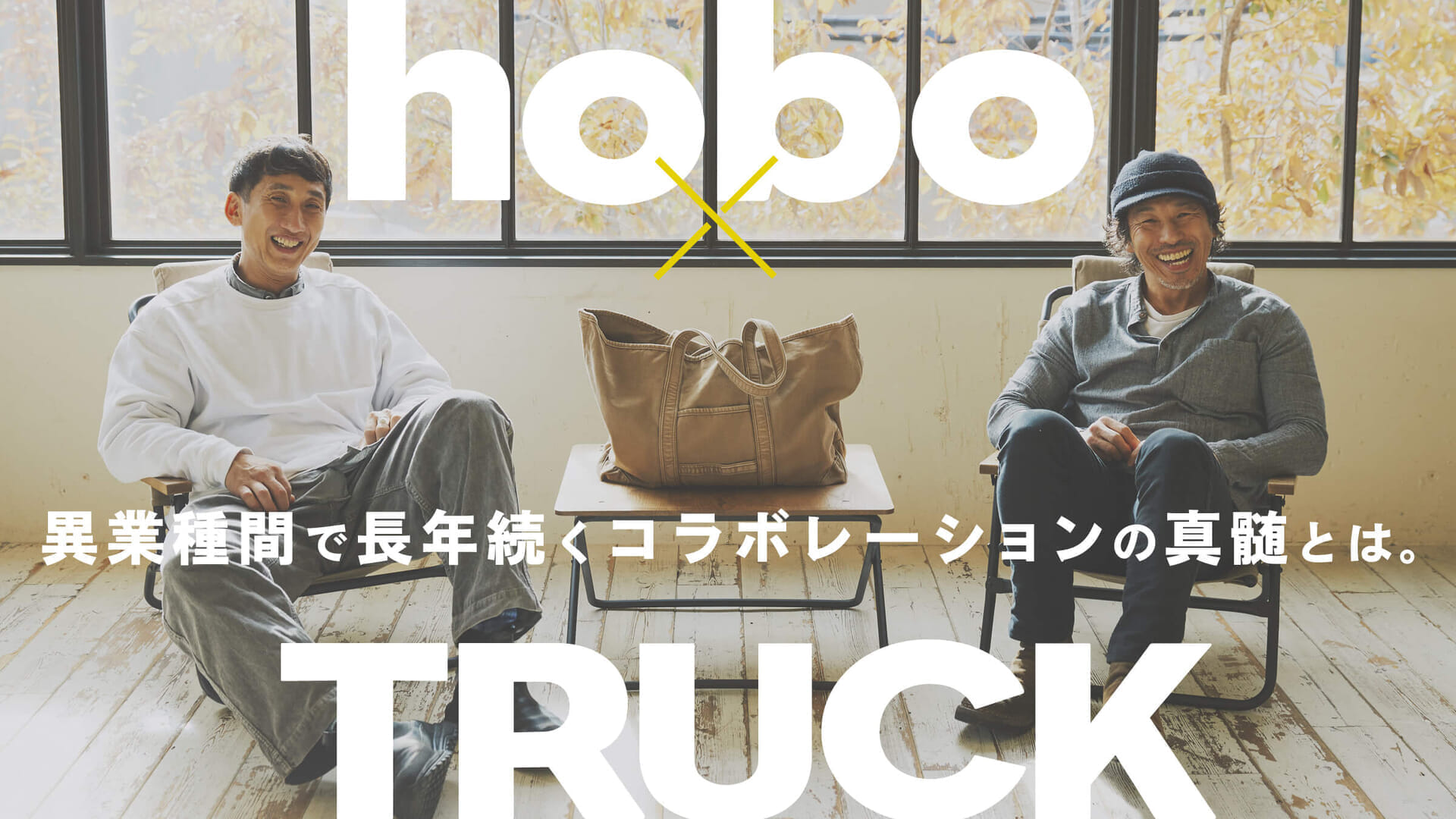
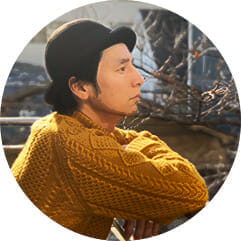
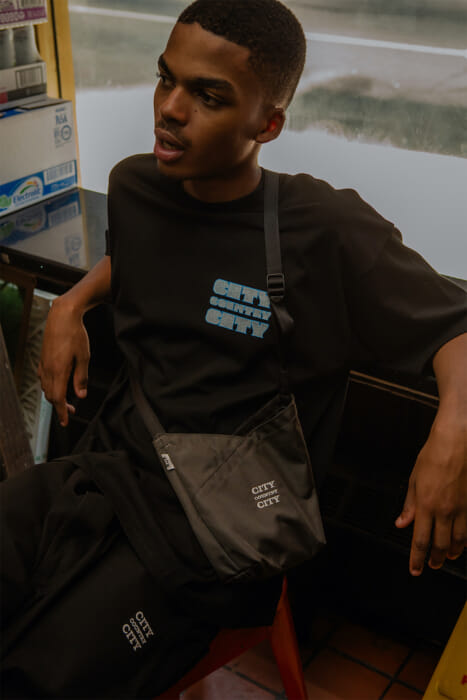
![MONTHLY CCC SESSION] VOL.5 Hideki Asakura (hobo) "Capsule Collection Born of Connection and Empathy](https://www.houyhnhnm.jp/wp-content/uploads/2023/08/panel_monthly_ccc_session_2400_1350_vol5-700x394.jpg)
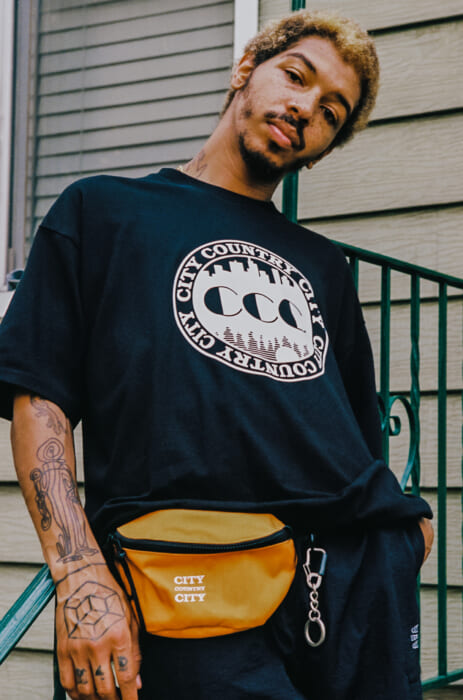
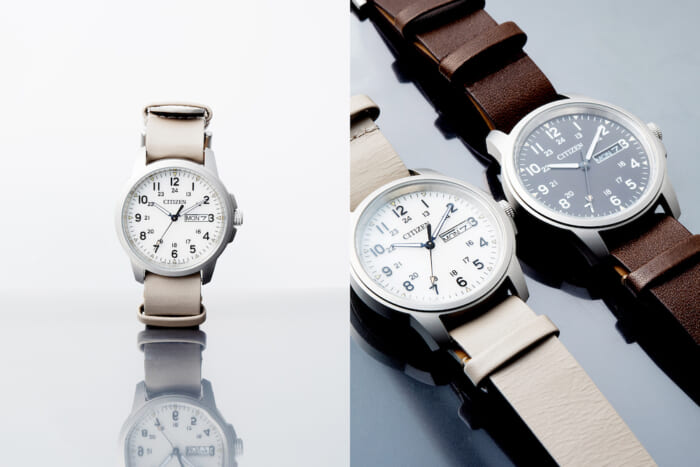
![HOUY-MAMMUT Adventure squad] The perspectives of designers and buyers intersect. Hobo x Mammut's special order shoes.](https://www.houyhnhnm.jp/wp-content/uploads/2021/09/mv-700x394.jpg)
